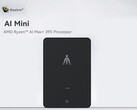Artificial intelligence workloads are colliding with storage limits that could push data-center emissions sharply higher, Seagate warned during its Computex 2025 keynote. Company projections show global data volume tripling between 2023 and 2028 and breaching the zettabyte range—far beyond what current manufacturing capacity can support.
More than 300 data center professionals surveyed ranked runaway energy use as the most significant barrier to sustainable growth. A broader poll of 1,000 IT staff painted the same picture: 72 percent already deploy or plan to deploy AI, and 90 percent of current AI users insist on keeping historical datasets because it improves model accuracy. That reluctance to delete information is inflating demand for long-term storage.
The entire hard-drive industry produces only 1–2 zettabytes of capacity per year, a fraction of anticipated data creation. Goldman Sachs Research expects data-center power consumption to rise by as much as 165 percent between 2023 and 2030, underscoring the need for efficiency improvements across the storage stack.
At its booth, the company demonstrated prototype hard disks fitted with NVMe interfaces—technology usually reserved for solid-state drives. Connected directly to Nvidia GPUs through data-processing units, the drives could simplify rack design by unifying storage protocols; single-lane versions fit existing SATA cabling, while dual-lane variants use SAS interconnects.
The manufacturer also confirmed the volume production of its Mozaic 3+ heat-assisted magnetic-recording drives after two decades of research and more than $1 billion in R&D spending. Integrated lasers briefly heat media to about 800°F, boosting areal density without enlarging the drive. Security-focused features such as cryptographic key erasure aim to curb the roughly 200 million hard drives shredded yearly, and autonomous regeneration allow continued service even after component failures.
Seagate’s internal life-cycle assessments place hard disks ahead of SSDs and tape in embodied-carbon terms, but the company concedes that balanced, multi-tier architectures are essential. Major cloud providers already blend SSDs for latency-critical workloads with disks for bulk storage, a strategy that may become standard as power grids strain under AI expansion.
Source(s)
DigiTimes (in English)






















